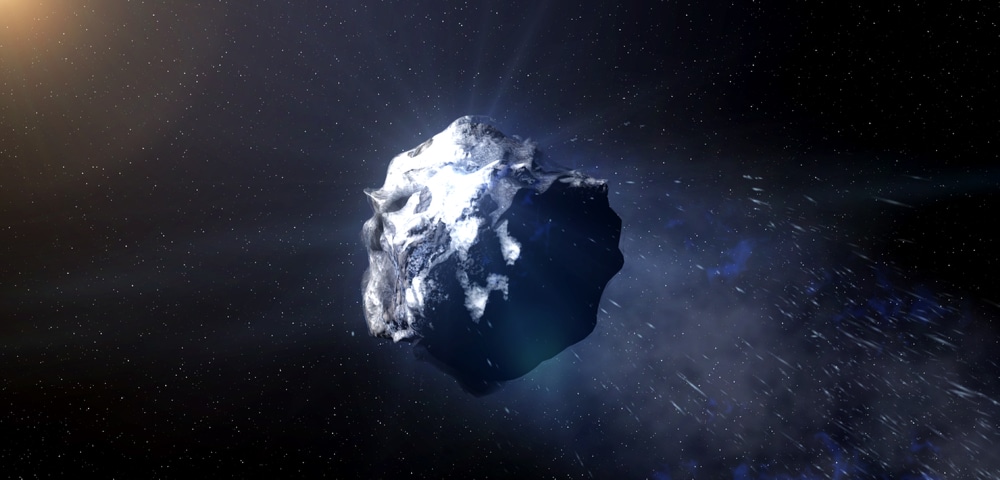Interstellar comets frequently visit our solar system
3 min read

According to a study published this week in the Monthly Notices of the Royal Astronomical Society, comets from other star systems such as Borisov 2019, we visited Solar System Often more than scientists think.

Based on data collected while Borisov traversed Earth at a distance of about 300 million kilometers in late 2019, the research suggests that the repository of a distant solar system comet known as the Oort cloud may be filled with objects born around other stars.
publicity celebrity
According to the study authors, the Oort cloud may contain more interstellar material than local material.
No spacecraft has visited the Oort cloud
Named after the famous Dutch astronomer Jan Oort, who first demonstrated its existence in the 1950s, the Oort cloud is a spherical envelope of small objects – asteroids, comets, and fragments – far from Earth’s orbit. Neptune.
The inner edge of the cloud is believed to start about 2,000 astronomical units (AU) from the Sun, and its outer edge is about 200,000 astronomical units (one AU is the average distance between the Earth and the Sun – about 150 million km).
Read more:
No spacecraft has ever visited the Oort cloud, and it would take 300 years for NASA’s distant Voyager 1 spacecraft to locate the closest part of the cloud.
According to a report on Space.com, astronomers have very limited tools to study this interesting world, since objects in the Oort cloud do not produce their own light and, at the same time, are too far away to reflect a lot of light from the Sun.
Amir Siraj, an astrophysicist who graduated from Harvard’s Department of Astronomy and lead author of the study, said he could calculate the probability of foreign comets visiting the solar system just to discover Comet Borisov.
“Based on the distance at which Borisov was discovered, we estimated the implied local abundance of interstellar comets, as well as the abundance of objects similar to the ‘Oumuamua interstellar body studied based on the ‘Oumuamua discovery,” he explained.
The mysterious ‘Oumuamua’, first seen by astronomers in Hawaii in October 2017, was the first interstellar object to be discovered in our solar system. It passed through the Earth at a distance of 24 million kilometers, which is about one sixth of the distance between our planet and the Sun.
From there, a fierce debate ensued about the nature of ‘Oumuamua, in which it was initially unclear whether the object was a comet or an asteroid.

“Even the detection of a single object can be used for statistical analysis,” Siraj said. In Surage’s analysis, the so-called Poisson method was used, which calculates the probability of an event occurring in a fixed time and space since the last event of the same nature.
Taking into consideration gravitational force Siraj and study co-author Avi Loeb, another Harvard astronomer, were able to estimate the likelihood of an interstellar comet reaching the circumference of the Earth.
They found that the number of interstellar comets passing through the solar system increases with increasing distance from the sun. and overpower the objects in the Oort cloud (comets from our solar system),” added Siraj.
So why have astronomers only seen one interstellar comet so far? The answer is technology. Only recently have telescopes become powerful enough to be able to locate those tiny but extremely fast objects, let alone study them in detail.
“Before the discovery of the first interstellar comet, we had no idea how many interstellar objects there were in our solar system,” Siraj said. “The theory about the formation of planetary systems suggests that there should be fewer visitors than permanent residents. Now, we have found that there can be much more visitors.”
They hope that with the arrival of the latest telescopes such as the Vera C. Rubin Observatory, currently under construction in Chile, the study of comets and asteroids outside the solar system can really take off.
You have seen our new videos on Youtube? Subscribe to our channel!

“Entrepreneur. Music enthusiast. Lifelong communicator. General coffee aficionado. Internet scholar.”

:strip_icc()/s04.video.glbimg.com/x720/11792055.jpg)

:strip_icc()/s03.video.glbimg.com/x720/11786998.jpg)